Your first experience with any new activity can be intimidating - that goes for spin class, salsa dancing or a round of golf.
For those of us who have been playing the sport our whole lives, we can take for granted all the little nuances that go into the day. I've played with a few beginners lately and it forced me to look at the experience from their perspective. I've drilled down into the total golf course experience, from the parking lot to the 19th hole, in hopes of clearing up expectations and policy the vast majority of courses have.
Hopefully this guide can help free up your mind to focus on what's important: your golf game!
But first: Are you ready for the golf course?
I was taught the sport by my grandparents who were avid players in retirement and they were fully aware when I was ready to graduate from the driving range to the tee. You may not have such a guided hand early on in your journey. Very few golf courses have handicap or ability restrictions in North America. They don't care how good you are as long as the credit card clears. But that doesn't mean you are ready. In fact, going to the course before you are ready is a good way to sour on the game forever, and none of us in the golf business wants that.
You should be taking a series of lessons from a PGA professional at a golf club or driving range. There are also indoor-based instruction programs that use video analysis like GolfTec, and even Topgolf offers lessons. A pro will tell you if you are ready. Playing lessons are great but tend to be more expensive since it is more time-intensive for the instructor. But time on the course with an expert's undivided attention is invaluable. Group lessons, like PGA's Get Golf Ready, are very affordable (even free in may places) and relaxed. Many municipal and public courses have similar programs, so look around for them.
If you are learning on your own, that's okay. There are invaluable teaching resources online these days. But are you ready to go from the driving range to the first tee?
Here are a few questions you should ask yourself before going to the course:
- Am I able to commit and make a swing without needing more than 20-30 seconds to set up?
- Am I making contact consistently and not hitting it off the club hosel regularly or whiffing?
- Am I able to get the ball airborn with an assortment of clubs ?
- Am I reasonably comfortable pitching and chipping shots around the green?
- Have I practiced a variety of short game and bunker shots (including from various lies and slopes).
If you answered 'no' to any of these questions, you may be better off with a little more time at the practice facility or taking lessons.
Booking the tee time

Tee times aren't usually required but they are highly encouraged. The last thing you want is to make the drive to the course and discover there is a league or outing underway - or worse the club is private and you're not welcome. Weekends are typically busier so you definitely want to set up your game as soon as you can (most clubs accept tee times about a week out, while resorts and high-end clubs can accept reservations up to 90 days in advance). Many, but not all courses offer tee times online these days on their own website or on GolfNow. You can also call the pro shop to book.
How to pick the right golf course to play as a beginner
All golf courses these days have several sets of tees, but you should still consider looking for courses that are on the shorter side (tees available from 4,000-5,500 yards should be plenty). You'll notice that here at GolfPass you can filter reviews by handicap or golfer "Type." Check the 20-24 and 25+ boxes to get a sense of how similar ability players liked the course.

Best time for new golfers to play golf

If you are a beginner, chances are you are going to feel a little nervous your first time to the course and you may be wary about playing with new people.
For these reasons I would recommend not going out on a busy weekend morning and instead play at twilight. Or, if your work schedule allows, sneak out mid-afternoon. Many facilities have their tee sheets online now so you can get a sense of how busy they are before you book by viewing availability (Many courses on Golf Advisor offer online tee times. Search for Courses near You or the specific course to start). If you aren't picky with what course you are going to play, wait until the day before or morning of your round and browse the nearby courses to see if there are any good windows where the course appears to be open.
More articles on beginner-friendly courses and golf destinations
What to wear to the golf course
Dress codes vary greatly these days, especially as some facilities have relaxed their dress code in hopes of not coming across as stuffy.
Municipal courses and pitch n' putts typically aren't enforcing much in terms of a dress code these days. But as a new player I'd recommend trying to blend in with proper golf attire. For men, that means wearing a collared shirt, tucked into slacks or shorts. Denim doesn't have the stigma it used to, especially up north, but I'd avoid it until you've been to the course a few times and it appears to be commonplace.
A word on women's dress code: I reached out to golf fashion extraordinaire Bailey Mosier for some insight into the colorful world of women's golf fashion:
It may seem entirely overwhelming trying to figure out what to wear to the golf course, but the great news is that there’s a wide number of options to choose from. And better yet – you don’t have to try to fit some preconceived mold of what a “golfer” should look like. Feel free to express yourself! From big box brands like Nike, Adidas and Puma to any number of the smaller boutique brands within the industry – one thing remains true: they all offer pieces that span the entire spectrum of athletic wear and come in all sorts of patterns and prints, encouraging you to be a fashionista on the fairways. If you’re still unsure what to wear, you’ll never go wrong erring on the side of more conservative.
Throw on a collared shirt (with or without sleeves), some sort of polyester/spandex short or skort, and some athletic shoes for starters, but once you feel more comfortable, don’t be afraid to let your personality show. - Bailey
What (and what not) to bring
You don't need to be fully accessorized to enjoy golf at first but here's what you should have. A set (or half set) of clubs that includes a couple woods, various irons, a wedge and putter. Rules stipulate you can have 14, but you'll be fine at first with seven. Or, just bring a putter, wedge and wood. Most clubs ask that each golfer has his/her own bag. Most courses have rental sets and they can vary greatly in quality and cost from $10-70.
Golf shoes are recommended but not required. Athletic shoes are acceptable at most courses.
What to leave at home?
- Do not bring in your own alcohol unless the course has explicitly said it is okay.
- I've seen new golfers stuff their bag full of range balls. This is stealing and a great way to be scolded by a ranger or even kicked out.
- Bringing a non-golfer with you can be tricky. Some courses are more tolerant than others. Some will charge a trail or cart fee.
- Dogs are typically not allowed at public courses though there are more and more that seem to tolerate a leashed up pooch. You'll definitely want to call ahead and ask.
Golf day: Checking in

If you booked your tee time for 1:20pm and you pull into the parking lot at 1:20pm, you're late! Golf courses can't offer "grace periods" like restaurant reservations. Tee times are typically 6-to-10 minutes apart and when the group ahead of you has teed off, the starter expects you to be ready to jump on the tee. Arriving at the course for a tee time 15 minutes early is about as close as I cut it. There could be a line at check in or parking could be difficult. If you want to hit balls or warm up properly, show up 30 minutes early or more.
Is there such thing as showing up too early? Not really. But there are some higher-end resorts or semi-private clubs who won't let guests use the practice areas until about an hour or so before your tee time. But you are certainly welcome to arrive and have breakfast or lunch in the clubhouse.
Some courses will have signs pointing towards a bag drop. Follow them, leave your clubs with the attendant and then and park your car. (If there is no one at the bag drop, you can take your clubs out and set them on the rack. The attendant may have just gotten tied up for a few minutes). Some courses, especially municipal courses, lack a bag drop attendant. In this case, park your car and carry your clubs to the clubhouse.
Leave your clubs on a rack outside or by the practice putting green.

Next, head into the clubhouse and look for the pro shop which is typically where check-in occurs. If you see a room full of apparel and equipment with a counter towards the front you're in the right place. There are some clubs where you check in elsewhere (Blue Sky Golf Club for example asks golfers to check in at the bar, and a select few courses have automated systems or separate starter huts). If you've prepaid your tee time you should still check in and get a receipt.

On the first tee
Some courses will have a starter who calls for you or summons your group on the range. Others have a loudspeaker. Sometimes there is no announcement at all and groups must be aware of their time and when it's their turn and claim the tee.
If you're paired up with other golfers, introduce yourself (some more avid players and particularly international players will remove their cap). Don't shake someone's hand while wearing your glove.
Speaking of being paired up, I know there are many new players who would rather not play with strangers. You can request this in the pro shop (tell them you are a new player), but if the course is busy, it's the starter's call on whether you can go alone or not. But do note that one of the best ways to get better at golf is to play with golfers who are more experienced than you are. You'll soak in plenty.
Most courses have between three and five sets of tees. If it's your first time, you should feel no shame in playing from the forward tees and working back as you feel comfortable.

You can mention to players when you are introduced that you are new to the game, but incessantly reminding them you are a beginner is overkill. Ultimately they'll know after a couple swings anyways. But don't worry! All of us golfers are ultimately so wrapped up in our own games. Just keep the pace (trust me, sometimes better golfers play slow and I'd rather play with a novice who is aware of their pace) and everyone will be happy.
I've played with new golfers throughout my life and am currently playing with friends and family members who have recently picked up the game. Chances are, any one you are paired up with has seen a golf swing way worse than yours! Keep that in mind and just do your best to pick up the pace: Don't spend much time looking for lost balls (bring used golf balls you are willing to lose) and pick up on a hole if you sense you're falling behind. Double-par is typically a good time for beginners to pick up.
Also, at some point during the round you'll grow frustrated. The game suddenly seems harder than before. You may exclaim "What am I doing wrong?" after shots. But don't expect your partners to drop everything and provide assistance. Not only does it slow up the pace and distract your partners, but a lot of golfers are apprehensive about offering swing tips on the course. We don't want to mess up your game further or muddy what your swing coach has you focusing on. Usually about the only advice I might give a newbie on the course is an alignment or tempo nugget. If you start fiddling with your grip in the middle of the round you're going down a dark path.

Golf etiquette basics
- In the GIF above, you'll notice the playing partners are standing still and to the side of the putter. They are not standing by the hole or in the putter's line of sight.
- Carry some coins in your pocket and if your ball might be in the way of someone else's putting line, use one to mark your ball.
- Rake bunkers if you go in them (including all your footprints. Grab the rake BEFORE you enter the trap to minimize footprints).
- If you make a ball mark on the green, repair it. If you don't have a divot repair tool, use a long tee.

Pace of play and playing through
Most courses have a ranger patrolling the course, but what they do varies greatly depending on the course and time of day. Their job, if done properly, is to keep an eye on the players and make sure there are no bottlenecks on the course. If you are playing slow, you will typically be given a warning to speed up.
There are a lot of rangers out there who aren't particularly useful or aren't all that compelled to assist players. So you should be aware if you are holding up play and take the initiative.
As for scoring, you are still new enough to the game that you shouldn't feel obliged to count every shot or play balls from awful lies. There will be plenty of time for that in the future. Instead, consider making your max score double of what the hole's par is (so if it's a par 4, pick up after 8 shots).
Walk or rent golf carts?
I've found most beginners feel compelled to take a golf cart over walking the course, They typically believe carts are more fun and faster. They may also find a full 18 of golf - which can span 5-7 miles! - to be tiring.
But I would recommend walking if the course is suited for it, and playing just nine holes if they have a nine-hole rate, over riding 18 holes. Golf is a game of rhythm and driving a golf cart will detract from your game, as well as reduce the amount of exercise and enjoyment.
That said, if it's blazing hot out or the course isn't walker-friendly you should by all means ride.
A few golden rules when driving a golf carts:

Avoid driving on the tee or green or in bunkers, as well as in native areas. It's best to drive as little as possible in the fairways or turf in general. Be mindful of holes that are "cart path only" (usually, all par 3s are cart path only). Avoid wet spots and roped-off areas. If there are no signs in front of the green directing carts back to the path, try and do so yourself about 30-40 yards before the green. When someone else is about to hit, be parked. When parking at the green, be mindful of where the next tee is and park in between the two. You're not a teenager in a Go-Cart. Take turns slowly on paths and fairways (or you could damage the turf) and go easy on the brakes.
You see? There are so many rules when taking a cart, you may lose focus on your golf swing itself. Consider walking!
Safety on the golf course
The golf course can be a dangerous place if negligence is at hand. If you think someone is in harms way before you swing, ask them to move. (This goes for playing partners, maintenance workers or nearby pedestrians). Be sure no one is standing behind you, either. On my high school golf team, a player was taking practice swings and didn't realize someone was behind him and broke someone's jaw. You should always be aware of your surroundings. That means not only your playing partners but other groups in the vicinity. A golf ball (or club) could literally come from anywhere.
If you hit a ball and it appears to be headed towards the vicinity of other people. Yell "FORE!" as loud as you can. Be loud! Trust me, they'll be madder if they are hit and didn't hear you than if your voice interrupted them.
Speaking of, you should always make sure the group ahead of you is out of the way before hitting. Better safe than sorry. If you hit your drives 200 yards, let them be at least 250-300 yards away. When waiting for a green to clear, you should wait for the group to be completely off the green and walking or riding to the next tee well out of the way.
And if you hit a wayward shot into a neighboring fairway, make sure you aren't getting in the way of the group on that hole. It's their hole so you should wait until it's all clear. If they are waiting on the tee to hit, they will wave you out to hit.
When the round is over
When you finish on 18, shake hands with your playing partners and thank them for the company. Do this whether they are friends or you just met on the first tee. Most American public clubs aren't sticklers about wearing golf shoes in the bar and grill or taking your hat off, but you'll look more like you belong if you do. You should also consider changing your shoes modestly, do so in the locker room, or at your car, and not in public or busy areas (though many do it anyways).
That's it! That's all it takes. Trust me, the first time may be rough, but no one will remember the bad shots you hit. Just keep a smile on your face, be courteous to your partners, and you'll have a fabulous day on the course. Now's the fun part: It's the 19th hole, where things may seem a little more familiar.

Breaking into the game: Beginners
In this brand-new GolfPass series, renowned golf instructor Martin Hall will teach you the basics of the golf swing to provide the perfect foundation to build a lifelong love of golf! Watch the full 10-episode series here.
Stay in the Swing with GolfPass!
Get exclusive tips from the pros, in-depth course reviews, the latest gear updates, and more delivered straight to your inbox.









 Back
Back










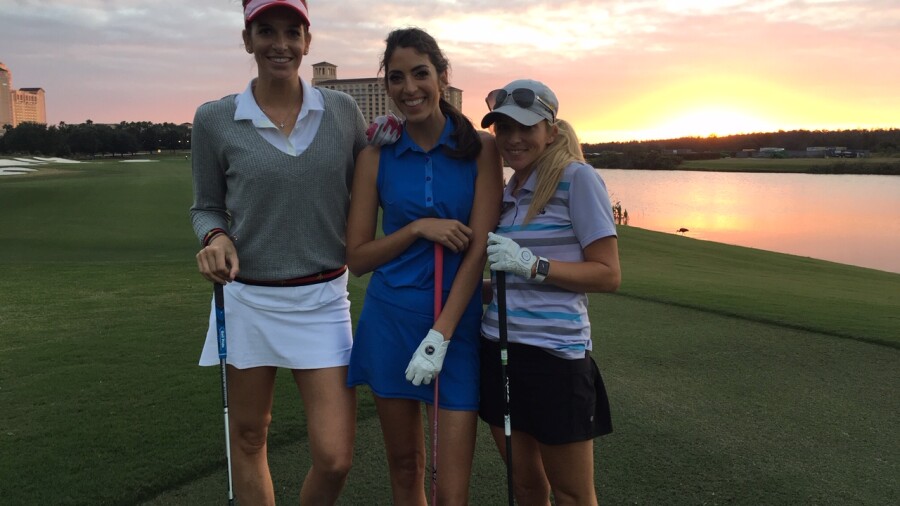

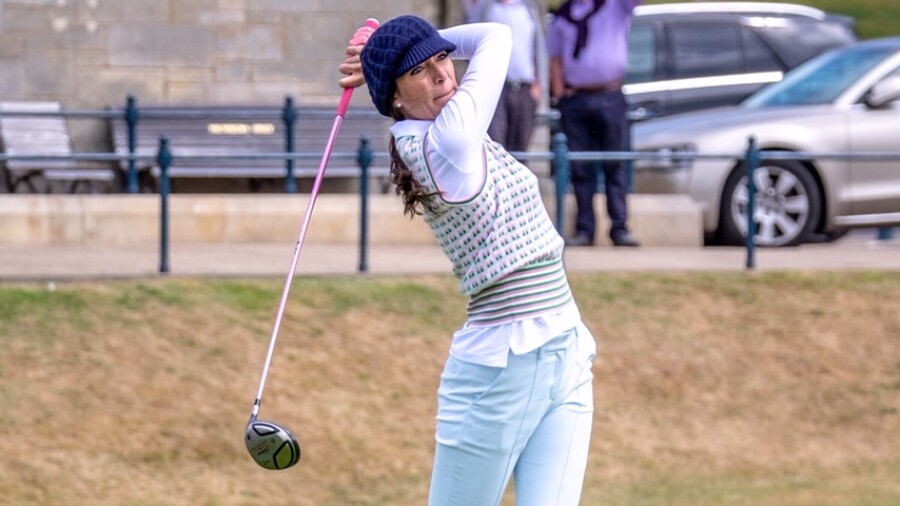
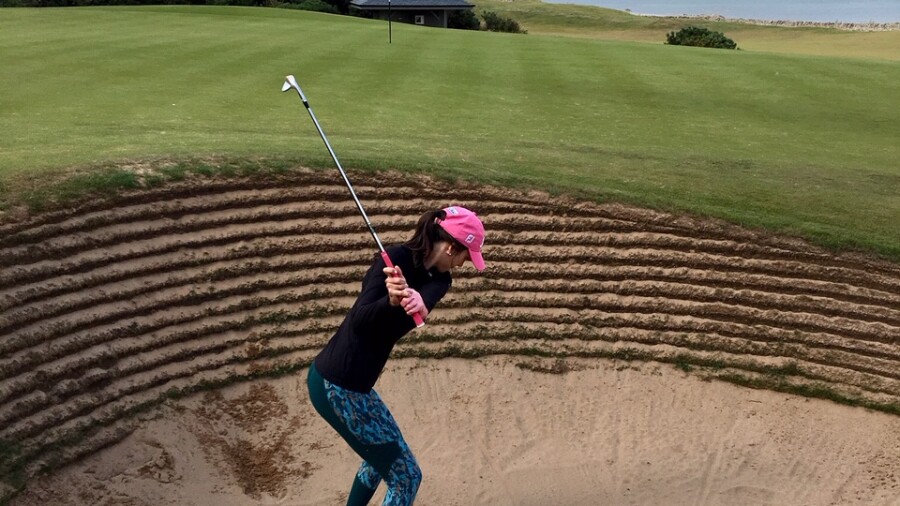
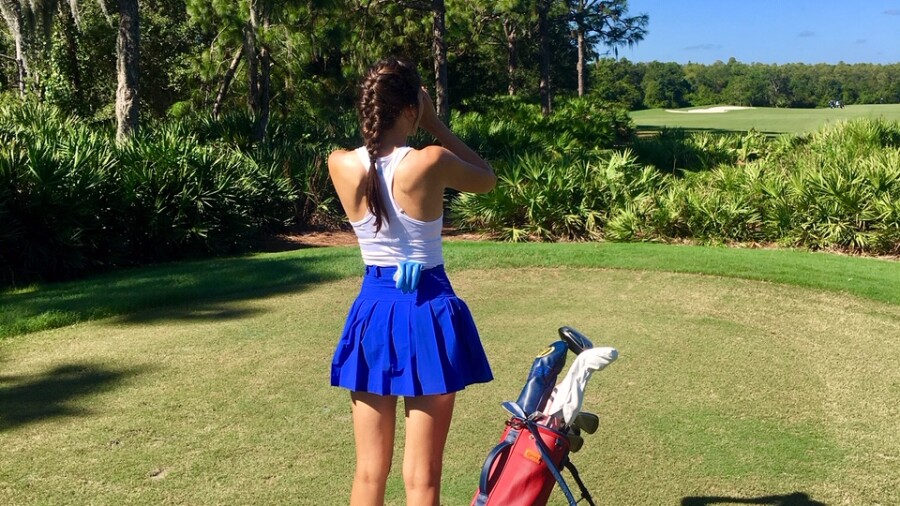








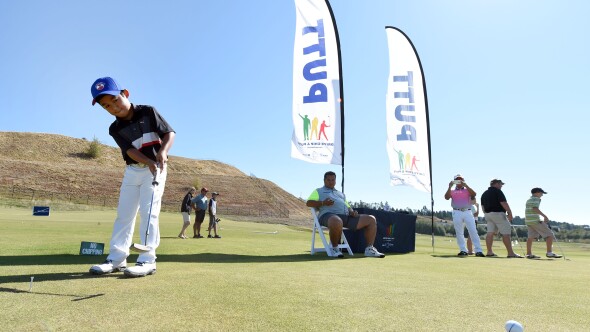


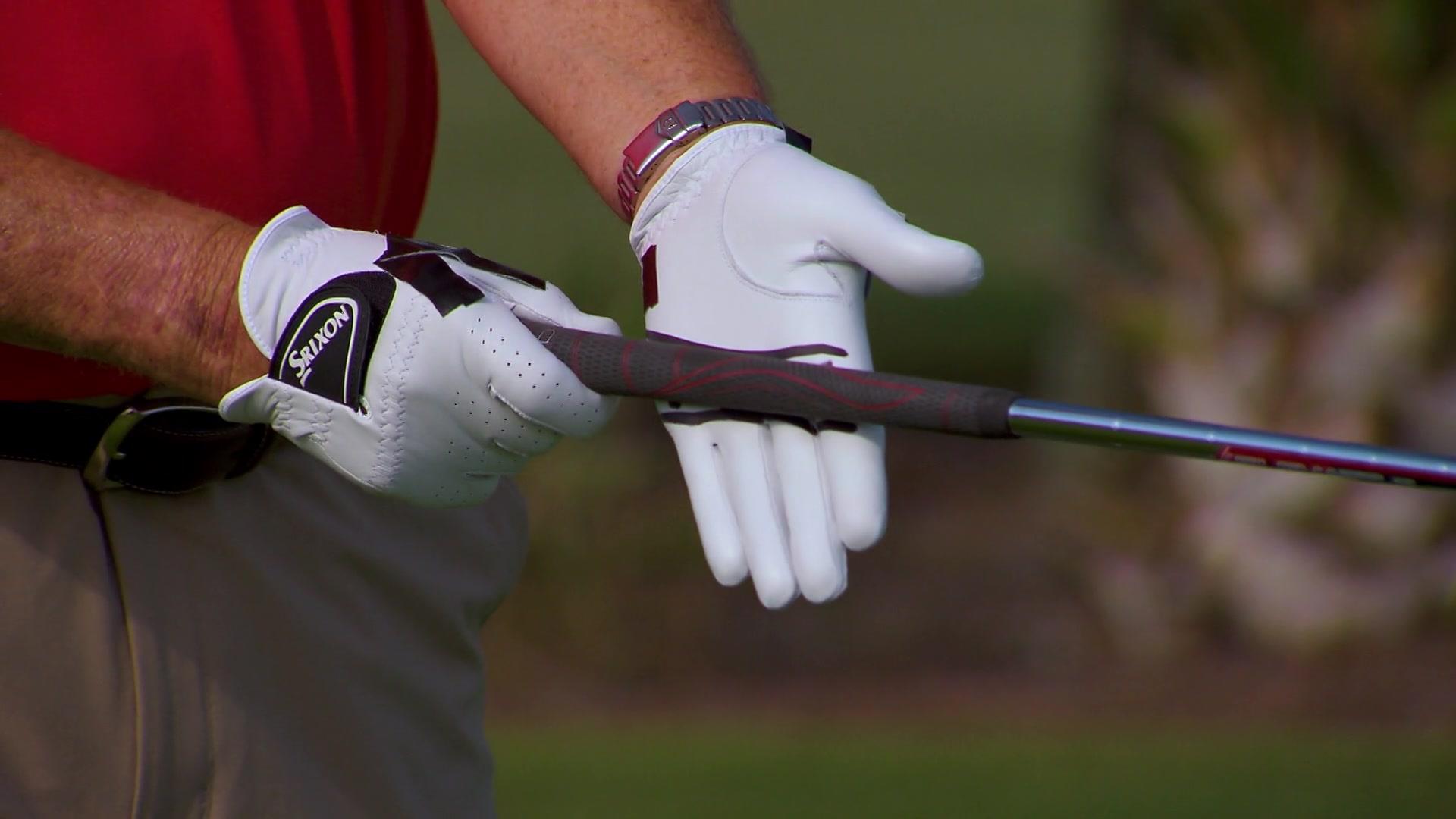











Comments (9)
Thank you for telling me that I can just use a collared shirt and pair it with some polyester short/skort to come up with a good golf course outfit. My husband had asked me to look up for nearby golf courses where we can both enjoy the sport. I'll try searching online for places with the highest ratings to ensure a good experience.
https://golfday.us/course-listings/golf-course-ratings.html
So, I decided to join the golf team at my high school. Tomorrow is the first day of practice and I am considerably nervous. Tomorrow will be the first time I've ever even been on a golf course. I don't know what to bring or wear. I really don't want to look like a complete fool, any tips?
My friends and I wanted to play golf on our day off, so we'll have a new activity. Thank you for this, we'll keep in mind to avoid the busy weekend, instead twilight or mid-afternoon would be great since we're still beginners. I better start looking for a golf course where we can play this fun sport!https://www.plumcreekgolf.com/
Knowing HOW to replace a divot and / or FIX a ball mark, should be in the FIRST category, "Are you ready to go from range to course". When my parents began to introduce my sisters, my brother, and me to the game we went from driving range to a local par 3, where on the first few rounds, we simply tagged along to watch, but were given the job of replacing divots and repairing ball marks. We LEARNED THE ETIQUETTE at the very beginning, including where to stand when others were playing / putting, being aware of casting shadows on someones line, playing quickly, etc. before we EVER made it out onto a regulation course.
I am new to golf and I don’t understand how stapleford scoring works
Generally speaking, amateurs play "Modified Stableford." The way we usually play it is 1 point for a (net) bogey, 2 for par, 3 for birdie, 4 for eagle. So blowup holes essentially mean nothing.
excellent overview Brandon. need to find a way to put this in front of all new and some who have played for a while golfers!
Thanks Blake! Glad to help